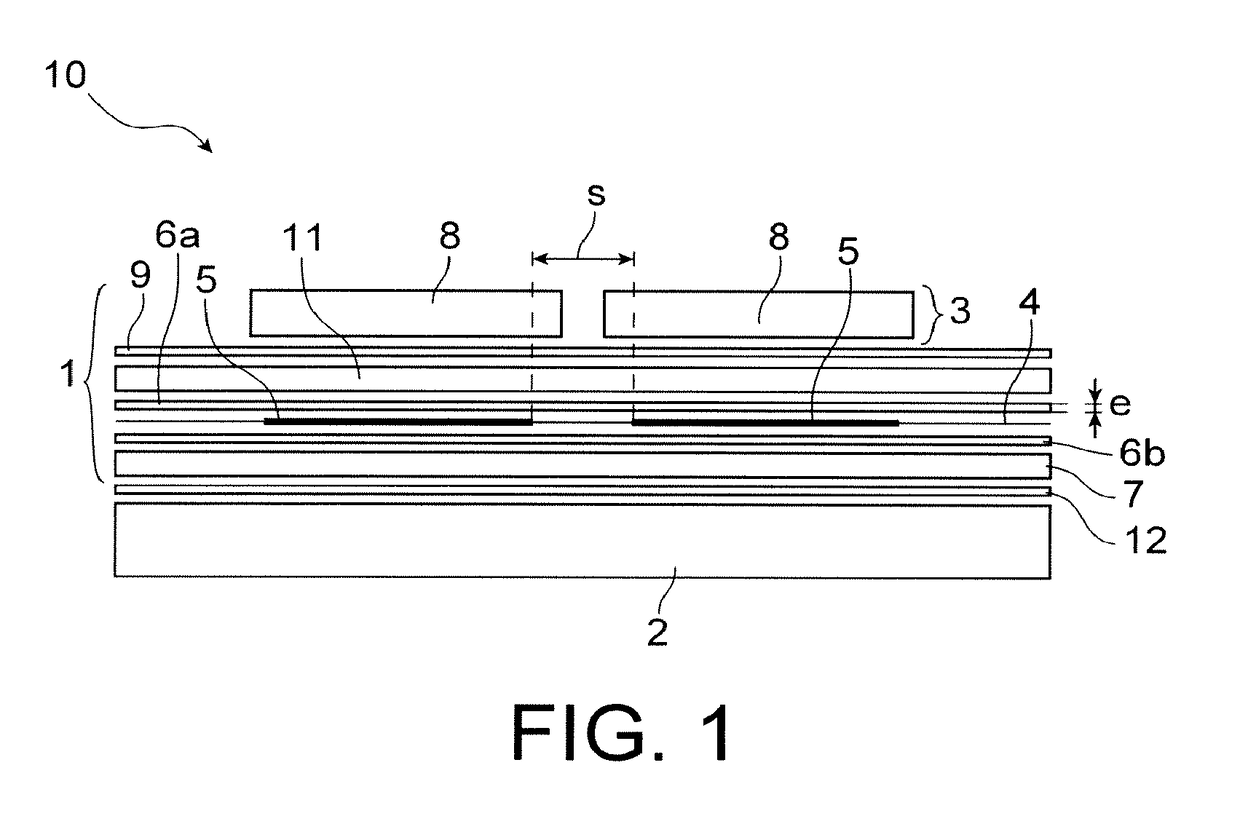Photovoltaic module comprising a polymer front face
a photovoltaic module and polymer technology, applied in the field of photovoltaic modules, can solve the problems of incompatibility of the presence of glass plates in the front face of the photovoltaic module with some applications, inability to achieve the effect of achieving a high module weight and limited integration capacity
- Summary
- Abstract
- Description
- Claims
- Application Information
AI Technical Summary
Benefits of technology
Problems solved by technology
Method used
Image
Examples
Embodiment Construction
[0015]There is therefore a need to propose an alternative solution for the design of a photovoltaic module in order to respond to at least some of the constraints inherent with applications considered by the use of the photovoltaic module, in particular in order to improve the flexibility, rigidity, lightness, flatness and resistance to impacts and mechanical loads of the photovoltaic module.
[0016]The invention has for purpose to overcome at least partially the needs mentioned hereinabove and the disadvantages relating to the products of prior art.
[0017]The invention also has for object, according to one of its aspects, a photovoltaic module comprising at least:[0018]a transparent first layer forming the front face of the photovoltaic module intended to receive a luminous flux,[0019]a set of a plurality of photovoltaic cells arranged side-by-side and connected together electrically,[0020]an assembly encapsulating the plurality of photovoltaic cells,[0021]a second layer forming the r...
PUM
 Login to View More
Login to View More Abstract
Description
Claims
Application Information
 Login to View More
Login to View More - R&D
- Intellectual Property
- Life Sciences
- Materials
- Tech Scout
- Unparalleled Data Quality
- Higher Quality Content
- 60% Fewer Hallucinations
Browse by: Latest US Patents, China's latest patents, Technical Efficacy Thesaurus, Application Domain, Technology Topic, Popular Technical Reports.
© 2025 PatSnap. All rights reserved.Legal|Privacy policy|Modern Slavery Act Transparency Statement|Sitemap|About US| Contact US: help@patsnap.com


